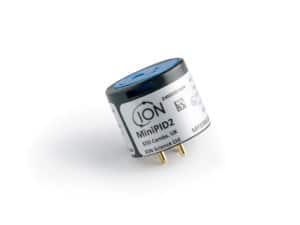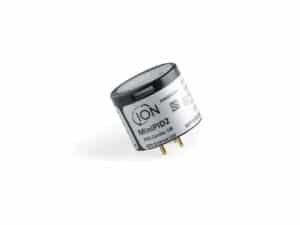
Effects Of Humidity In Volatile & Aromatic Compound Detection
The photoionization detector (PID) has proven to be an ideal tool
A common frequently asked question is “can humidity interference affect my PID detector results?” Like many sensors and measurement instrumentation, traditional PIDs can indeed be affected by the environmental conditions i.e. dust, dirt and in particular, humidity. The major producers of oil & gas are located in the Gulf States and in or close to the Gulf of Mexico, which are of course areas of high temperature and high humidity.
Humid Environment – A Guide to Detecting VOCs
In addition to fixed and portable solutions, personal monitoring of volatile organic compounds is a vital component in the protection of worker’s health from the potentially toxic effects of short term high or longer-term, lower level repeated exposure.
In addition to fixed and portable solutions, personal monitoring of volatile organic compounds is a vital component in the protection of worker’s health from the potentially toxic effects of short term high or longer-term, lower level repeated exposure. The photoionization detector (PID) has proven to be an ideal tool but there are considerations when choosing the right instrument.
”Like many sensors and measurement instrumentation, traditional PIDs can be affected by the environmental conditions such as those found in process environments, in particular dirt and humidity. Humidity is a naturally occurring phenomenon and is present in the atmosphere and gasses. The presence of humidity can disrupt PID measurements in two ways leading to false low or conversely high readings.
Effects of High Humidity On PIDs
A major limitation to the use of PIDs in the past was their susceptibility to ambient humidity, which is often found in hazardous environments. This is a particular issue in refineries which are typically located near water, or when measuring VOCs in steam, wastewater, or contaminated soil (which is usually moist).
Conventional PIDs may use humidity suppression/compensation techniques but each of them has disadvantages:
- Humidity sensor – these typically have a slower response than the PID sensor itself which causes a drifting compensation
- Desiccant tube – these both slow the PID response and also reduce it by adsorption plus they need replacing from time to time which adds cost
- Humidify the calibration gas – this only works at one level of humidity and is no longer accurate when the humidity changes
Importantly none of these solutions solves a false positive at high humidity.
ION Science has developed a new generation of PIDs with almost no humidity effects, without the need for RH sensor compensation, desiccant tubes, or calibration gas humidification. This is accomplished by a combination of:
- an improved sample inlet system to reduce dust and moisture entering the sensor;
- thinner sensor cell to suppress the loss of photons by water adsorption;
- the patented “Fence-Electrode” design that grounds any spurious current and thus eliminates humidity-induced drift
The humidity- resistance has been extended to fixed PIDs as well. Fixed systems are useful for applications where VOCs are expected on a routine basis, such as in chemical process control, fence line monitoring, wastewater monitoring, chemical storage areas, or locations of frequent chemical use. In some of these instances, monitoring is done outdoors, where rain or night-time condensation can result in liquid water being drawn into the PID.
– Petro Industry News
Download our FREE Guide
“Humid Environment – A Guide To Detecting VOCs”
Humid environments – A guide to detecting VOCs which can be downloaded below provides the reader with an in-depth balance of knowledge to understand the common frequently asked question “can humidity interference affect my PID detector results”. We discuss the problems with old PID technologies and compare them to the new designs that are available on the market to compete and perform against the harsh conditions with high humidity in the atmosphere.















